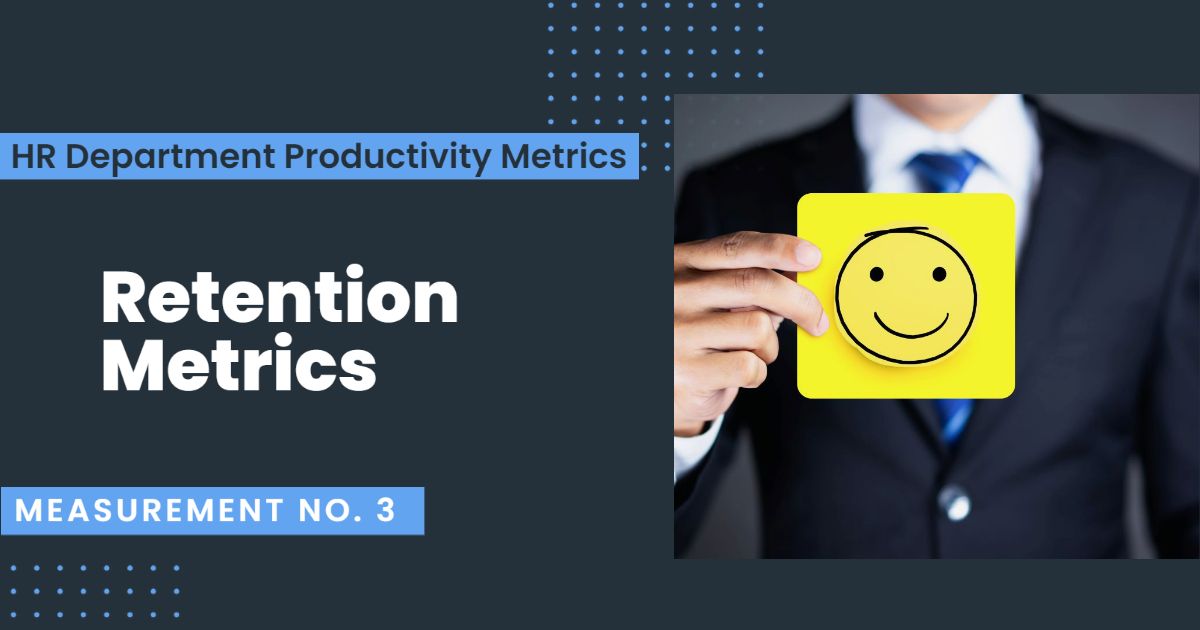By Julie Goh
In today's business landscape, the role of the human resource department has evolved from a traditional administrative support function to that of a strategic business partner. As such, measuring HR productivity is essential for identifying areas where HR can add value to the organisation. This would include developing innovative talent management strategies, enhancing employee engagement and retention, and fostering a culture of diversity and inclusion. By taking a proactive approach to HR management and measuring its productivity, businesses can leverage HR as a strategic partner to drive growth, profitability, and long-term success.

COMPLIANCE METRICS
The HR Department is responsible for ensuring the company is in compliance with laws and regulations related to employment.
Compliance metrics refer to a set of measurable standards or requirements that an organisation must meet in order to comply with various laws, regulations, and policies. These metrics are used to assess whether an organisation is meeting its legal and ethical obligations, and can cover a wide range of areas such as employment laws, occupational health and safety, data privacy, and anti-corruption.
Measuring compliance metrics, such as the number of compliance violations or audits passed, can provide insight into how effective the HR Department is at meeting these responsibilities. Audits here may refer to those done internally (by the internal audit or compliance department) and externally (by JTK, external auditor, and any other external parties).
For example, compliance metrics for an organisation might include the number of work-related accidents, penalties imposed by statutory bodies for non-compliance, the number of times the company is called up by JTK or IR office due to complaints, or even by MACC for bribery investigations. If your HR Department frequently has to attend IR cases, this means your compliance risk is high.
By tracking compliance metrics, organisations can identify potential areas of risk and take steps to address them, demonstrate their commitment to responsible business practices, and avoid legal or reputational penalties for noncompliance.
When your compliance is at risk, this would increase your expenses as well - expenses from covering costs due to accidents, violation fines, and compensation payouts, besides all the wasted time and manpower which could have been put to better use.

RECRUITMENT METRICS
Recruitment metrics refer to the measurable indicators that organisations use to evaluate the effectiveness of their recruiting efforts. These metrics provide insight into the efficiency and quality of an organisation's recruitment process and can help identify areas for improvement. Here are some examples of common recruitment metrics:
- Time-to-fill: This measures the length of time it takes to fill a vacant position. A longer time-to-fill can indicate a need for process improvement or that the HR Department is having difficulty finding qualified candidates.
- Cost-per-hire: This measures the total cost associated with filling a vacant position, including advertising, recruiting events, recruiter salaries, and other related expenses. A high cost-per-hire can indicate that the HR Department’s recruiting process is inefficient or that it is not effectively sourcing candidates. If time-to-fill is longer, naturally the cost-per-hire will also increase.
- Applicant source: This measures the effectiveness of various sources for finding job candidates, such as job boards, employee referrals, job fairs, or social media. By tracking the source of successful hires, organisations can focus their recruiting efforts on the most effective channels.
- Quality-of-hire: This measures the performance and retention of new hires. This metric is often subjective and can be evaluated based on a variety of factors, such as job performance reviews, employee engagement surveys, or turnover rates.
- Diversity metrics: This measures the diversity of an organisation's workforce, including factors such as race, gender, and age. Tracking diversity metrics can help organisations ensure that they are attracting and hiring a diverse range of candidates and building a more inclusive workplace culture.
It is important to note that having a lot of job applications in response to your vacant position ad does not mean your recruitment process is successful. Only when you are able to attract quality candidates will you be able to fill up the position quickly and at a lower cost. If you have to re-advertise multiple times just to fill up a position, then it is high time to review and find out the reason why.
By tracking these recruitment metrics, organisations can identify areas for improvement in their recruitment process, optimise their recruitment budget, and ensure that they are attracting and hiring the best candidates for their open positions.

RETENTION METRICS
Retention metrics are used to measure the effectiveness of an organisation's efforts to retain its employees. By tracking retention metrics, organisations can identify potential areas for improvement in their employee retention strategies and take proactive steps to improve employee satisfaction, engagement, and overall retention rates. Here are some examples of common retention metrics:
- Turnover rate: This measures the percentage of employees who leave the organisation over a specified period. A high turnover rate can indicate a problem with employee satisfaction or engagement, ineffective management practices, or a competitive job market.
- Employee engagement: This measures the level of employee satisfaction and commitment to the organisation. This can be measured through employee surveys or focus groups that ask employees about their job satisfaction, work environment, and overall engagement with the organisation, or even by reviewing the absenteeism rate.
- Internal promotion rate: This measures the percentage of open positions that are filled by internal candidates. A high internal promotion rate can indicate that the organisation is investing in the development of its employees and creating opportunities for career growth, which can lead to higher employee retention rates. It also indicates that the HR Department has has a working succession plan, and does not need to rely on external talents to fill up leadership positions. When employees have an opportunity to grow in the organisation, the tendency to leave is significantly reduced.
Succession planning does not mean to just identify an employee who can take up a leadership position in the future. It also involves training and developing that employee with the right skills and competencies to fit in that role.
By tracking these retention metrics, the HR Department can identify areas for improvement in their employee retention strategies and take proactive steps to improve employee satisfaction, engagement, and overall retention rates.

LABOUR COST
Labour cost is a commonly used metric to track the cost of employing staff within an organisation. This metric provides insight into the financial impact of staffing decisions, and is calculated by dividing total labour costs by the number of employees.
Labour costs typically include wages or salaries (including overtime, maternity allowance etc), benefits, statutory contributions, and other related costs. By tracking labour costs, the HR department can assess the financial impact of hiring new employees, providing benefits, and paying salaries. This metric can help organisations identify areas where labour costs are high, and make adjustments to reduce costs while still ensuring that employees are fairly compensated.
In addition to measuring labour costs on a per-employee basis, HR departments may also track labour costs as a percentage of total revenue or total expenses. This can provide additional insight into the financial impact of staffing decisions and help organisations ensure that labour costs are in line with their overall financial goals. If half of your revenue is spent on labour cost every month, then you would need to immediately find out what contributes to this high cost.
Overall, labour cost is an important metric for the HR department to track as it provides insight into the financial impact of staffing decisions and can help organisations make informed decisions about compensation and staffing levels. By monitoring labour costs, the HR department can ensure that the organisation is operating efficiently and effectively, while still providing fair compensation to employees.